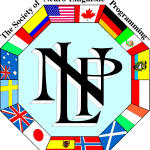NLP Analogue Marking

In NLP Analogue Marking doesn’t have to do much with language patterns, but the more how you use your voice. In our experience it doesn’t hurt to become fully in control of your voice as it makes you bring our message to your client more easy and more smooth. A lot of the techniques we explained in previous blogposts are even more powerful when you apply Analogue Marking. Analogue Marking means that you set the directive apart from the rest or the sentence with some non-verbal analogue behavior.
NLP Indirect Elicitation Patterns

Indirect Elicitation Patterns are very useful in getting specific responses indirectly, without asking for them. Again, in the Meta Model we scope for information that is sent to us as the listener to be as complete as possible. The Milton Model is the opposite of it. In other words we as an NLP Practitioner or Master Practitioner plan our outcome very well. Where Direct Elicitation can result in much resitance or authority, in NLP Indirect Elicitation Patterns help you soften the communication. Using them results in a desired response indirectly. In other words, you are asking for an outcome without making it obvious that you are asking and there is a desired outcome. Fun, right?
NLP Meta Programs

In NLP Meta Programs are a process by which one sorts through multiple generalizations simultaneously. As such, Meta Programs control how and when a person will engage in any set of strategies in a given context. Here are key take aways for you:
Change of Time Verbs and Adverbs

Change of Time Verbs and Adverbs is a great article about helping you deeper understand the concept of presuppositions and the Milton Model. It helps you to quickly and easily change the perception of your client. In proper use of it, you are able to provide some kind of an embedded command to your client. It helps you presuppose something by using Change of Time Verbs and Adverbs. Take the following example: “You can continue to relax.”. It presupposes that you are already relaxing. Another one: “Are you still interested in doing business?”. It presupposes that you were at some point interested in doing business with me. Now we have provided you some examples already, let’s take a closer look on how to apply this technique. Here we go!
Mind Reading

I know, you know you have already learned a lot about Mind Reading in the Milton Model. Mind Reading is the phenomena where you act as if you truly know what is going on in the listeners head. Mind reading statements send the person that you are communicating with into a mild form of confusion at the conscious level. They will ask themselves: “How to they now, I know?” It creates a bit of confusion. And as a result the conscious mind is given something to think over. That is exactly you want to achieve. Make the conscious mind busy to seep in instructions to the unconscious mind. Now you reading this will think: “Is it that easy?” Yes it is!
Universal Quantifiers

Words such as all, every, always, nobody, etc. are Universal Quantifiers. Universal Quantifiers usually indicate overgeneralization. Remember we are in the land of, Trance, Hypnosis and the Milton Model. So the usage of Universal Quantifiers should be applied in such a way. Where the Meta Model learns us to reveal deleted, distorted or generalized information, here we are going to use Universal Quantifiers to be specifically vague and provide the listener ways that produce trance as well as other outcomes. Every word you are reading here can assist you in going deeper and deeper into a beautiful trance. And so should we utilize Universal Quantifiers.
Adverbs and Adjectives

Adverbs and Adjectives presuppose that something is going to happen. Adverbs and adjectives add information to a verb (doing word) or noun (naming word) respectively. If I were to say “Johnny is running quickly”, “quickly” would be the adverb as it is adding more detail or qualifying the verb “to run”. The question is how will the experience be? That is the question, you, as an NLP Practitioner needs to investigate. Adverbs and Adjectives is a wonderful part of the Milton Model that helps you do your work easier and quicker. It only needs some planning. For you to experience the information below.


